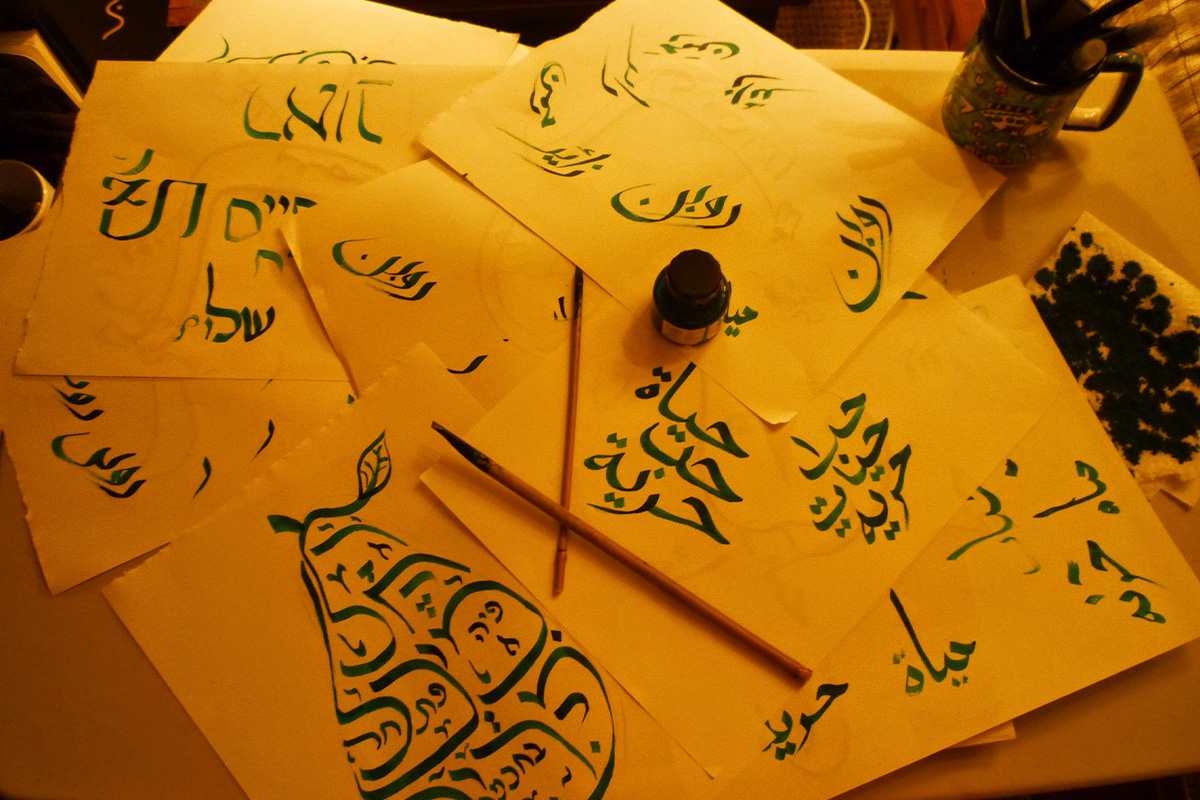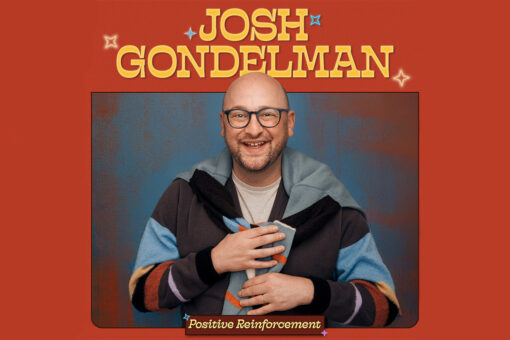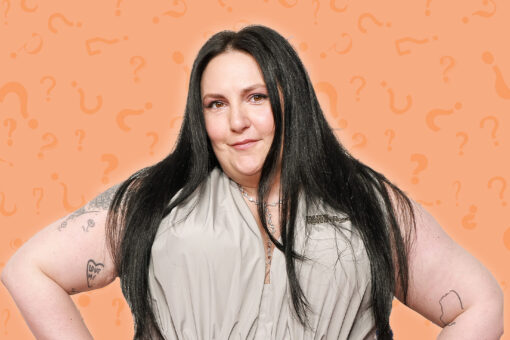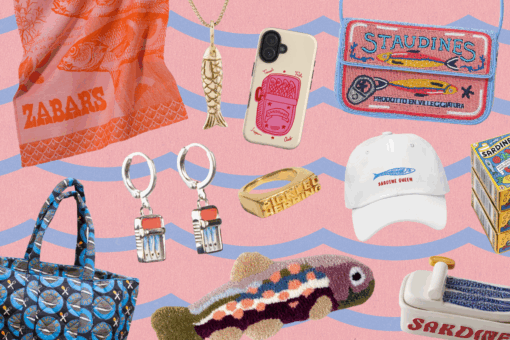In Ruben Shimonov’s “rimon | ruman,” the right hip of a pomegranate serves as two Rs simultaneously: one in Hebrew script, the other in Arabic.
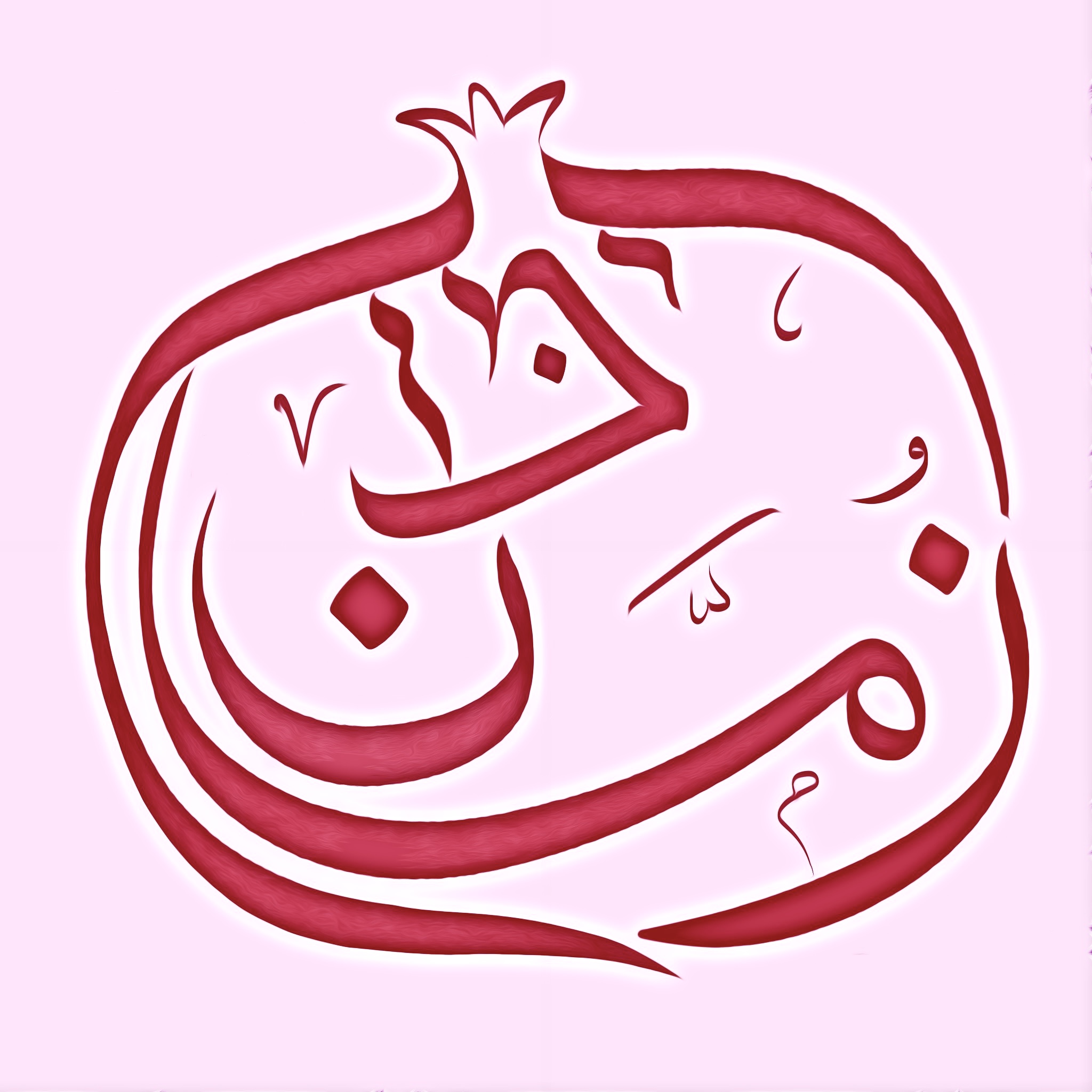
This is one of many of Ruben Shimonov’s calligraphic creations, which incorporate Arabic, Hebrew and Persian. Born in Uzbekistan and raised there until the age of 6, the Jewish artist cites his multilingual and multifaith upbringing as the root of his connective, word-based art. Uncovering these linguistic connections serves as a didactic tool for his interfaith and intercultural work with Muslims and Jews from Islamic-majority lands.
Shimonov uses his art to activate interfaith dialogue and as an outlet for his passion for education. Ultimately, it is a tool of community-building, as Shimonov runs various calligraphy workshops — including the Muslim Jewish Solidarity Committee, Muslim American Leadership Alliance, Sephardic Mizrahi Q Network (of which he is the Founding Executive Director) and the American Sephardi Federation’s Institute of Jewish Experience. For the latter organization, Ruben serves as the National Director of Sephardi House and Young Leadership.
I spoke with Shimonov about the intentions and influences behind his art.
This conversation has been lightly condensed and edited for clarity.
How did you first get into calligraphy?
My passion for calligraphy stems from a few sources. Number one: my multilingual background. Growing up with Judeo-Persian in the household (Bukharian), and Russian, and also Hebrew, and then picking up Spanish and Arabic later — all of that made me realize the importance and the beauty of languages from a young age.
I was born in Uzbekistan and I’m part of this ancient, deep-rooted Jewish community that has lived in Central Asia for millennia. According to our narrative, our story begins with the Babylonian expulsion from the land of Israel over 2600 years ago. Our community… has our own particular Jewish language, a Judeo-Persian language, and that has been an important part of our identity. We retained a strong sense of identity even as empires came and went…
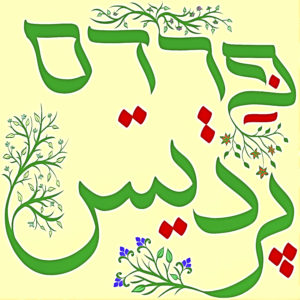
[Like Hebrew in Judaism], Arabic holds a sacred role in Islamic cultures and Muslim identity because it is seen as a holy and prophetic language. In Uzbekistan, Arabic was a language that you would see beautifully depicted on the outside of mosques and mausoleums and madrasas. Some of the most beautiful Islamic architecture is from our part of the world.
My love of language made me appreciate its power. Arabic has influenced my community’s language and Persianate languages in general. As I started learning Arabic in college, I found myself just doodling all the time on pieces of paper — I actually taught myself the [Arabic] alphabet before I started taking classes at my university. I found myself in an almost trance-like state when I was doodling Arabic and Persian on my notepad. I developed this interest in — this passion for — writing and experimenting with different scripts, in Arabic and Persian and then in Hebrew. So I would say that was an expression of my own Jewish background and my love of arts. I also come from a very artistic family.
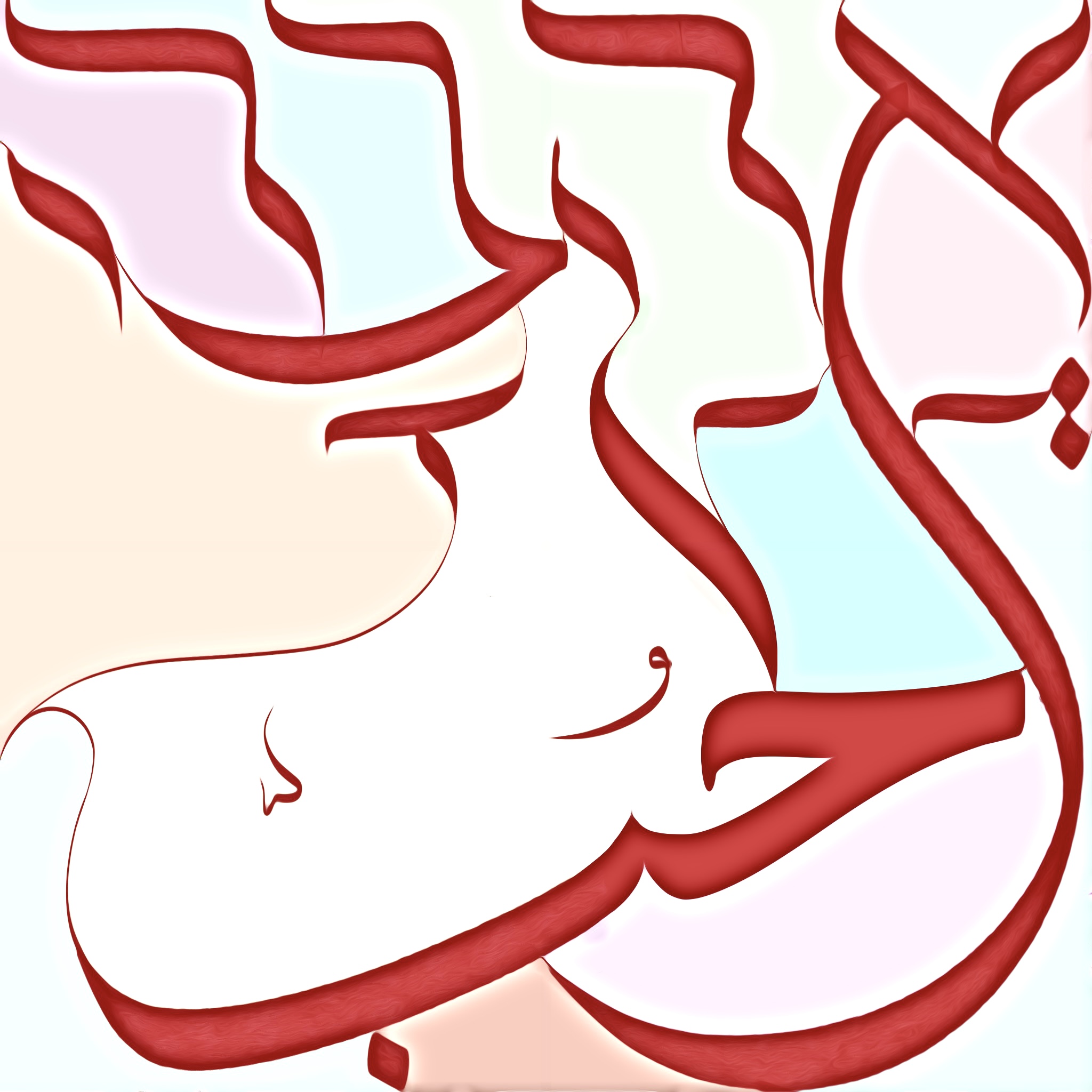
What tools and materials do you use?
I have used many kinds of tools and instruments for my calligraphy on paper; I’ve tried various pens, including the more traditional kallam reed pens, but I often used a more modern twist with pens that you don’t have to drip every time — calligraphy marker pens. I also experimented with different surfaces: making my calligraphy on glass, drawing my calligraphy on canvas using brushes and acrylic.
What I found to be my niche after all that exploration — appreciating the histories of Islamic and Jewish calligraphy and scribal works, honoring all of that — meant I needed to come to my own approach. Now I make my pieces using digital means. While I still will do calligraphy on paper or on other surfaces, the surface that I feel is most creative and liberating for me is a screen. It can be a tablet screen, but believe it or not, I do most of my work on my phone. It’s a lot of detailed stuff. I’ve gotten used to it. It’s cool that I can be anywhere and put anything down.
I use the digital realm and new technology to activate my creativity. There are apps that are essentially digital canvases, and your finger is the calligraphy pen. You can program it to look like a nib pen with different thicknesses. It opens up these new possibilities about how you can transform the shapes. It’s another way of doing it — it’s not as traditional but it’s just as creative. It’s opening up new possibilities for calligraphy artists, too — there’s a movement among calligraphy artists to do digital calligraphy.
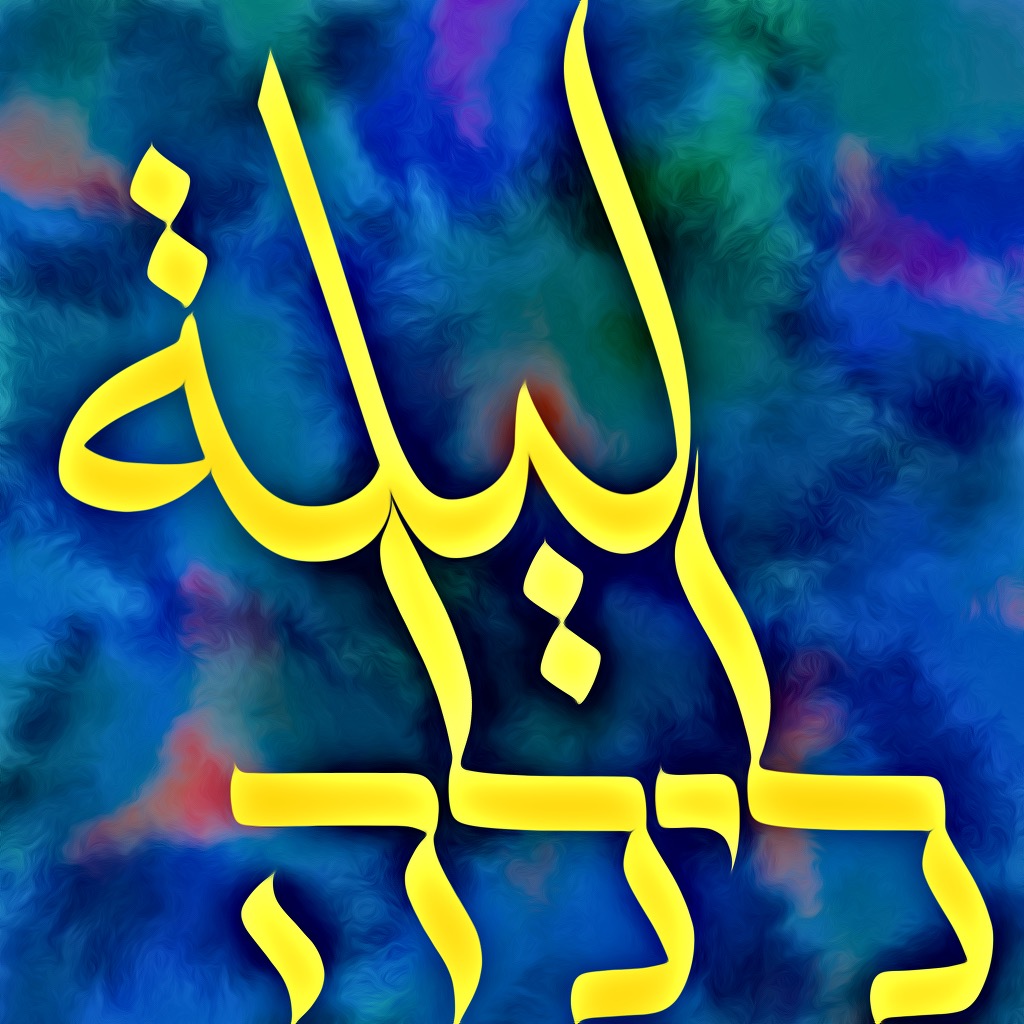
What have been your favorite moments while exhibiting your work?
I was invited to an art salon, a very experimental space where you are encouraged to try out new things: Salon Al Mahjar in Brooklyn. I projected my art, digital and physical, onto a big wall. As the different pieces were showing, music was playing, and different people from around the world who speak Arabic and Hebrew recited the words that I was showing — so it was a real multi-sensory experience. You heard music and different folks from Morocco, Iraq, Israel, the US, Argentina, reciting these words. I have a goal of furthering that and creating a gallery where you have my art projecting on all the walls and then you’re also hearing all these sounds, all these different people coming together.
The words I chose are cognates: words that are the same in Hebrew and Arabic. We all know shalom and salaam, but these are just the tip of the iceberg. There’s ḥikmah and ḥokhmah, wisdom; ḥag and ḥajj, pilgrimage and holidays; or ‘ayin and ‘ayin, eye and eye. They open up the door for incredible conversations and exploration, so are the words that I use in my art that I want spoken. I wanted it to be experiential and experimental.
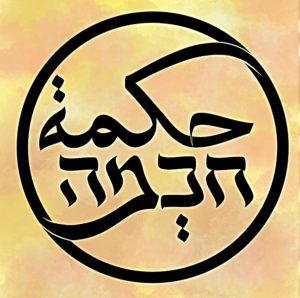
At the end, the last image that was projected was a piece of parchment paper. We paused the projection and I started giving out markers to people in the audience. I made a rough outline for them to draw in and invited them to come draw whatever they wanted. The word I had sketched out was nahnu / anahnu, meaning we or us. I still have the photo of what we made. I tried it out once and I have bigger goals for it.
What is your process? Does your process vary from piece to piece?
I think of two cognates and the piece meditates on that. The words are the building blocks. I’ll make different sketches and start asking how these words are speaking to one another — that takes the most time. Once it clicks, I can make the piece quickly. The words interact with one another. There’s a whole creative process I go through when I think about how I want to put it together, and that process itself is often very meditative and introspective. There’s a mindfulness to it.
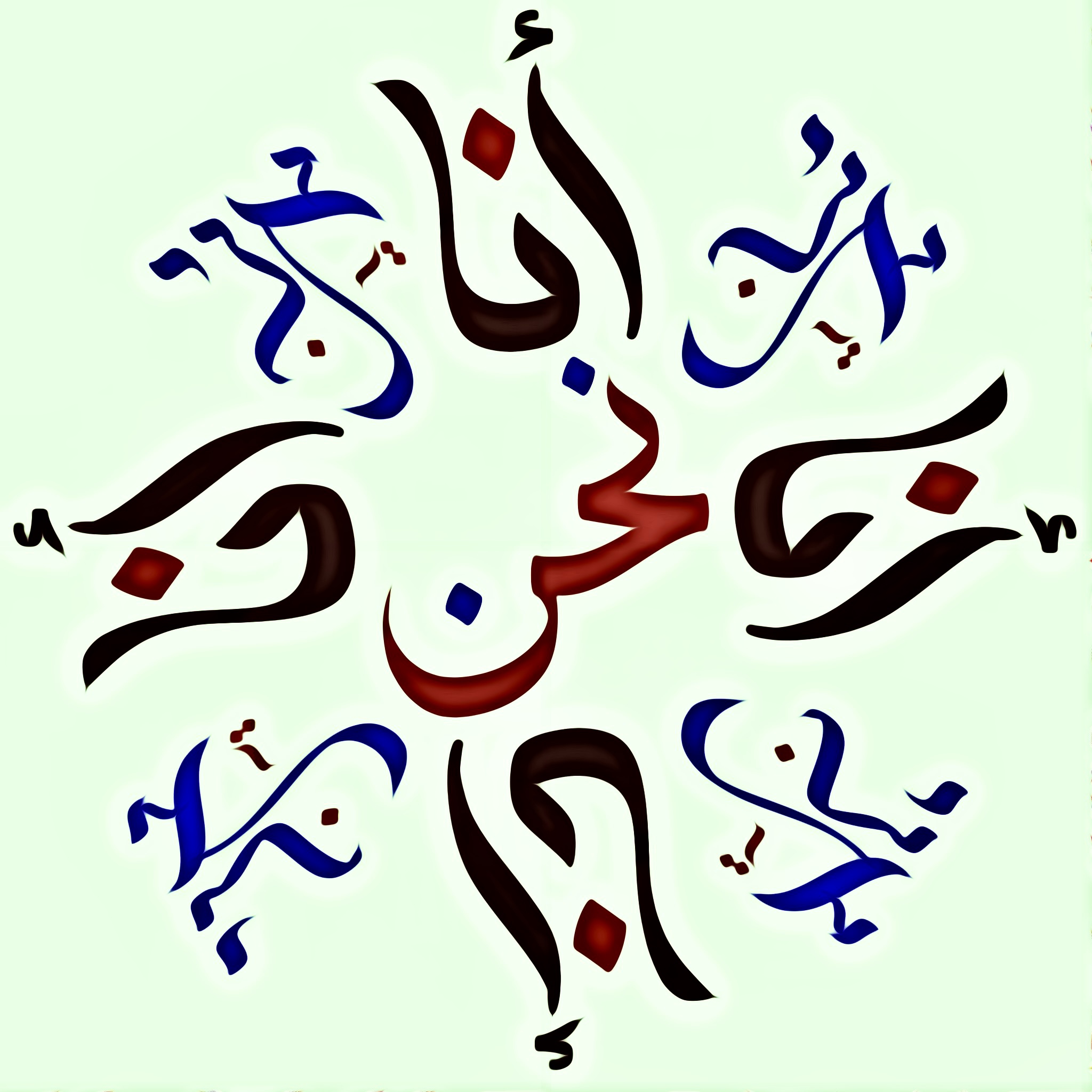
What are you working on now?
I took the dive and launched this page to both share the art and teach folks, allowing for experiential and experimental education. I say a little bit about the words I use, and then share a reflection on those pieces.
Another thing I’m working on is a jewelry piece with an artist friend of mine. They have their own jewelry page on Instagram. I’m excited to take my art in this new dimension, making it something you can wear. My friend works with technology to make jewelry a reality via 3D printing. I’m excited to make some of my pieces into pendants.
